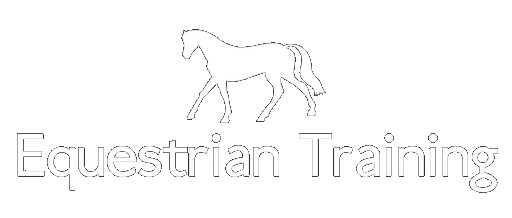1. Our Commitment
1.1. Equestrian Training is committed to the active promotion of equality and diversity, the removal of barriers to learning, and the removal of unfair practices.
1.2. We will respect you as an adult.
1.3. We will provide a safe and comfortable place for you to learn and for our staff to work.
1.4. We will support you with your learning.
1.5. We will ensure that you will not be harassed or made to feel uncomfortable about your:
age
gender
ethnicity
religious beliefs
sexual orientation
disability, including hidden disabilities
origins
appearance
or any additional support you may require.
2. Our Legal Obligations
2.1. Equestrian Training has a number of legal requirements to help protect and support learners. These include:
The Equality Act (2010)
The Race Relations Act (1976)
The Race Relations Amendment Act (2001)
The Disability Discrimination Act (1995)
The Special Educational Needs & Disability Act (2001)
The Sex Discrimination Act (1975 & 1986)
The Sex Discrimination (Gender Reassignment) Regulations (1999)
The Sexual Orientation Regulations (2003)
The Religion or Belief Regulations (2003)
The Human Rights Act (1998)
The Equality (Age) Regulations (October 2006)
The Gender Recognition Act (2007)
3. Our Policy
3.1. Equestrian Training Limited is committed to encouraging equality and diversity among our workforce, and eliminating unlawful discrimination.
3.2. The aim is for our workforce to be truly representative of all sections of society and our customers, and for each employee to feel respected and able to give their best.
3.3. The organisation - in providing services and/or facilities - is also committed against unlawful discrimination of customers or the public.
3.4. The policy’s purpose is to:
3.4.1. provide equality, fairness and respect for all involved with our training schemes, whether temporary, part-time or full-time
3.4.2. not unlawfully discriminate because of the Equality Act 2010 protected characteristics of age, disability, gender reassignment, marriage and civil partnership, pregnancy and maternity, race (including colour, nationality, and ethnic or national origin), religion or belief, sex (gender) and sexual orientation
3.4.3. oppose and avoid all forms of unlawful discrimination. This includes pay and benefits, terms and conditions of employment, dealing with grievances and discipline, dismissal, redundancy, leave for parents, requests for flexible working, and selection for employment, promotion, training or other developmental opportunities
3.5. The company commits to:
3.5.1. encourage equality and diversity in the workplaces as they are good practice and make business sense
3.5.2. create working environments free of bullying, harassment, victimisation and unlawful discrimination, promoting dignity and respect for all, and where individual differences and the contributions of all staff and learners are recognised and valued
3.5.3. This commitment includes training managers and all other employees about their rights and responsibilities under the equality policy. Responsibilities include staff conducting themselves to help the company provide equal opportunities in employment, and prevent bullying, harassment, victimisation and unlawful discrimination
3.5.4. All staff and learners should understand they, as well as their employer, can be held liable for acts of bullying, harassment, victimisation and unlawful discrimination, in the course of their employment, against fellow employees, customers, suppliers and the public
3.5.5. take seriously complaints of bullying, harassment, victimisation and unlawful discrimination by fellow employees, customers, suppliers, visitors, the public and any others in the course of the organisation’s work activities
3.5.6. Such acts will be dealt with as misconduct under the organisation’s grievance and/or disciplinary procedures, and any appropriate action will be taken. Particularly serious complaints could amount to gross misconduct and lead to dismissal without notice
3.5.7. Further, sexual harassment may amount to both an employment rights matter and a criminal matter, such as in sexual assault allegations. In addition, harassment under the Protection from Harassment Act 1997 – which is not limited to circumstances where harassment relates to a protected characteristic – is a criminal offence
3.5.8. make opportunities for training, development and progress available to all staff, who will be helped and encouraged to develop their full potential, so their talents and resources can be fully utilised to maximise the efficiency of the organisation
3.5.9. decisions concerning staff, learners and employers being based on merit (apart from in any necessary and limited exemptions and exceptions allowed under the Equality Act)
3.5.10. review employment practices and procedures when necessary to ensure fairness, and also update them and the policy to take account of changes in the law
3.5.11. monitor the make-up of the workforce regarding information such as age, gender, ethnic background, sexual orientation, religion or belief, and disability in encouraging equality and diversity, and in meeting the aims and commitments set out in the equality policy
3.5.12. Monitoring will also include assessing how the equality policy, and any sporting action plan, are working in practice, reviewing them annually, and considering and taking action to address any issues
3.6. The equality policy is fully supported by senior management (Amy Hodgson, Director) and has been agreed with employee representatives, Carlisle College and Awarding Bodies.
3.7. Details of the organisation’s grievance and disciplinary policies and procedures are readily available from the Equestrian Training Office and all learners/ employers receive a copy at the beginning of a training scheme.
3.8. Use of the company’s grievance and/or disciplinary procedures does not affect an employee’s right to make a claim to an employment tribunal within three months of the alleged discrimination.
4. Equality & Diversity Action Plan
4.1. Action: Review induction content for learners and employers to ensure good understanding; for: Training Team; by: Monthly Review Meetings
4.2. Action: Review the way in which Equality and Diversity principles are embedded into deliverable courses, progress reviews, and the support network surrounding learners; for: Senior coordination team; by: Bi-annual Standardisation Meetings
4.3. Action: Promote Equality and Diversity in Company documents and publicised materials, including website and social media to improve awareness, gender equality, and promote good practise; for: Director/ Marketing staff; by: Annual Marketing Plan
4.4. Action: Review the recruitment policy and procedure to ensure equal opportunities at all stages; for: Senior Coordination team; by: Ongoing and update adhering to any changes in legislation.
